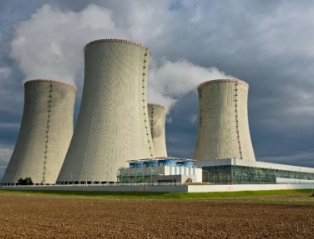
The three utilities have been monitoring emerging nuclear technologies and said they have a mutual interest in evaluating their potential to support growing energy needs in the state. APS is leading the effort in collaboration with SRP and TEP to assess a “wide range” of possible locations, including at the sites of retiring coal plants.
Siting work for additional nuclear would consider small modular reactors (SMRs) and potential large reactor projects.
“Energy demand in Arizona is increasing rapidly,” said Ted Geisler, APS President. “To ensure a reliable and affordable electric supply for our customers, we are committed to maintaining a diverse energy mix. While new nuclear generation would take more than a decade to develop, the planning and exploration of options must begin now. We are partnering with neighboring utilities to assess the feasibility of new nuclear generation, alongside other resources, to meet the state’s growing energy needs.”
The utilities have applied for a grant from the U.S. Department of Energy (DOE) to begin preliminary exploration of a potential site for additional nuclear energy for Arizona. The application has been submitted under the U.S. Department of Energy’s Office of Clean Energy Demonstrations & Office of Nuclear Energy’s Generation III+ Small Modular Reactor program. If approved, the grant would support a three-year site selection process and possible preparation of an early site permit application to the U.S. Nuclear Regulatory Commission.
The grant application is an initial step in a larger collaborative effort by the utilities to explore the possibility of adding nuclear energy in the state. This joint effort could see the selection of a preferred nuclear site in the late 2020s, at the earliest, potentially enabling additional nuclear to be in operation in the early 2040s. The three Arizona utilities will continue their collaboration on charting a path to meet Arizonans’ energy needs into the future.
“New nuclear generation could provide Arizona with reliable, around-the-clock carbon-free energy to power economic growth while helping us make progress toward a clean energy future,” said Susan Gray, TEP President and CEO. “We know the development timeline would be long, so it makes sense for our state’s energy providers to begin this preliminary evaluation as soon as possible.”
Coal to nuclear?
Arizona is one of nearly a dozen states that were considering coal to nuclear transitions as of last year, per the U.S. Department of Energy.
A 2022 DOE report found that more than 300 existing and retired coal power plant sites could convert to nuclear, dramatically increasing dispatchable, carbon-free energy as the country strives to meet its net-zero emissions goal by 2050. The department said each plant could match the size of the site being converted and help increase nuclear capacity by more than 250 GW — nearly tripling its current capacity of 95 GW.
The DOE report also found that new nuclear plants could save up to 35% on construction costs depending on how much of the existing site assets could be repurposed from retired coal power plants. These assets include the existing land, the coal plant’s electrical equipment (transmission connection, switchyard, etc.) and civil infrastructure, such as roads and buildings.